Macaulay Walk, Clapham
Weaving contemporary architecture into 19th Century warehouses
Overview
Macaulay Walk has sensitively transformed the site of the nineteenth century Ross Optical Works, a company making cameras, lenses and projectors through the World Wars, into a contemporary new ‘village’ for Clapham Old Town.
Five new buildings are woven in between six retained and converted warehouses to provide 113 bespoke homes and 14,000 sq ft of flexible studio space, all brought together along a reinstated ‘internal’ street.
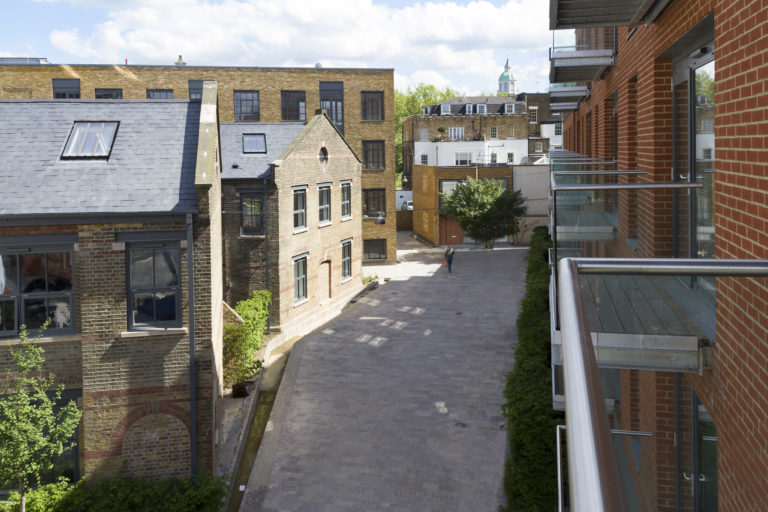
Celebrating the site’s context & history
Bordering Clapham Common and located in the original Georgian quarter of Clapham Old Town – one of the few ‘village-like’ areas in London with a diverse range of independent shops, restaurants, bars, and a weekly market – the site’s surroundings guided the layout, massing and materiality from the outset.
The Optical Works consisted of a collection of industrial buildings arranged around a narrow route that connected the site’s entrance on Macaulay Road with Clapham Common Northside. The buildings varied significantly in quality, and several had been spoiled by makeshift extensions built in haste during the wars. However, six of the buildings contributed positively to the architectural character of Clapham Conservation Area, and were retained and converted for residential use, whilst the rest of the site was rebuilt.
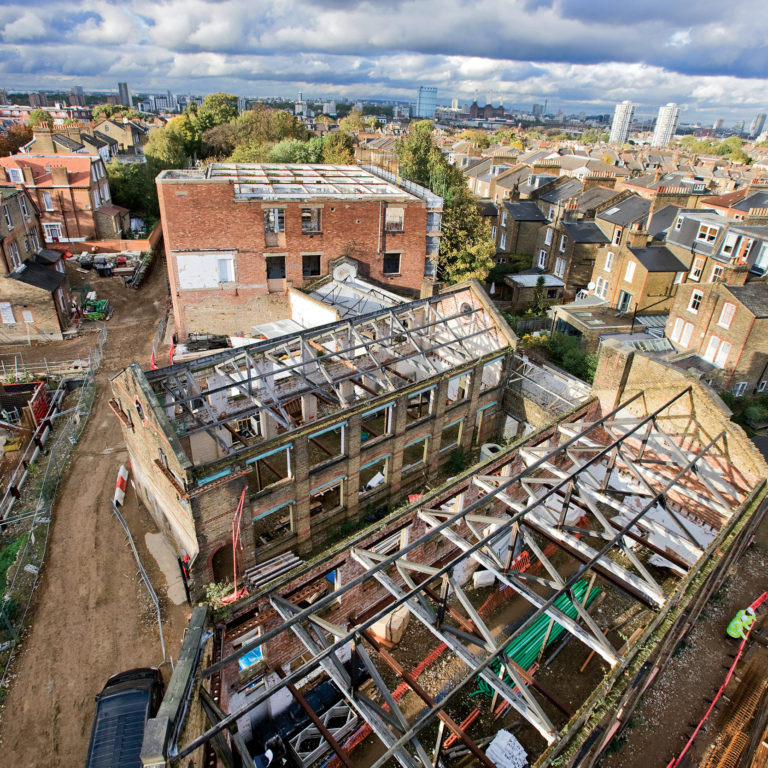
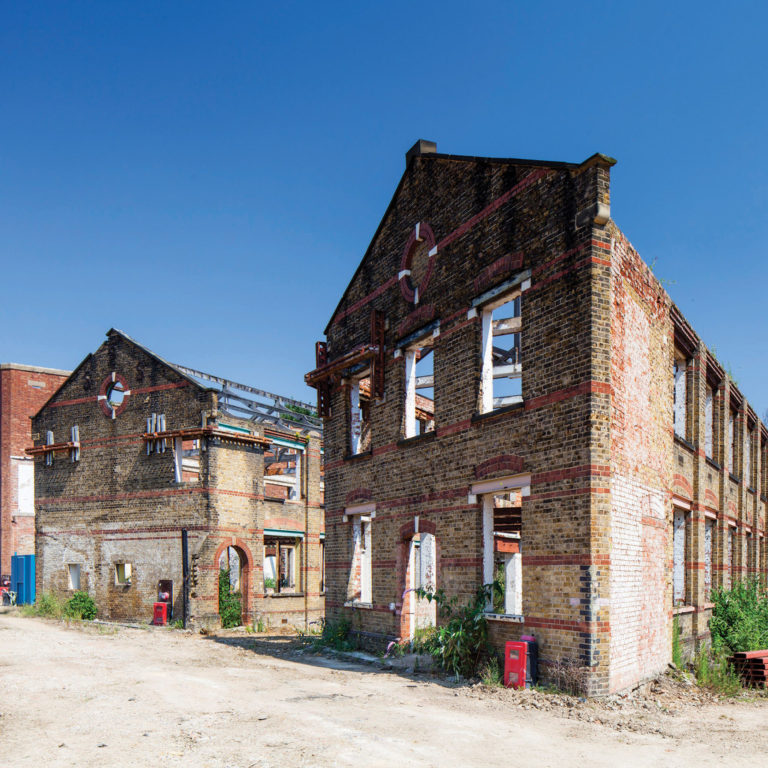
Design
Taking inspiration from the layers of the site’s history, the vision was to bring Macaulay Walk’s eclectic mix of architecture together by the reinstated ‘internal’ street. This new route provides direct pedestrian access onto the adjacent Clapham Common, a new public space at the heart of the development, highlighted by open water rills, large mature trees and the decorative brickwork and Victorian ironwork of the warehouses, and views of the Grade II* Listed Holy Trinity Church.
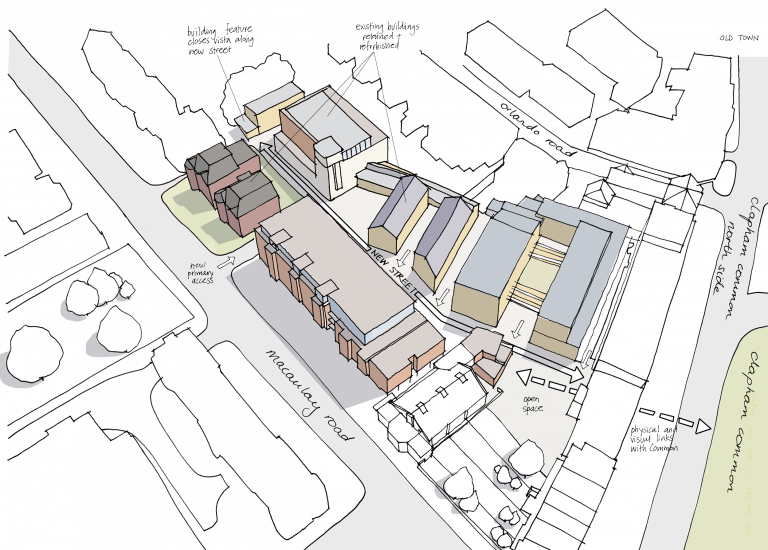
The two storey gabled-ended brick buildings, which once held the camera shop and stores, now accommodate eight one and two bedroom duplexes, each which their own entrance from the street and private gardens to the rear.
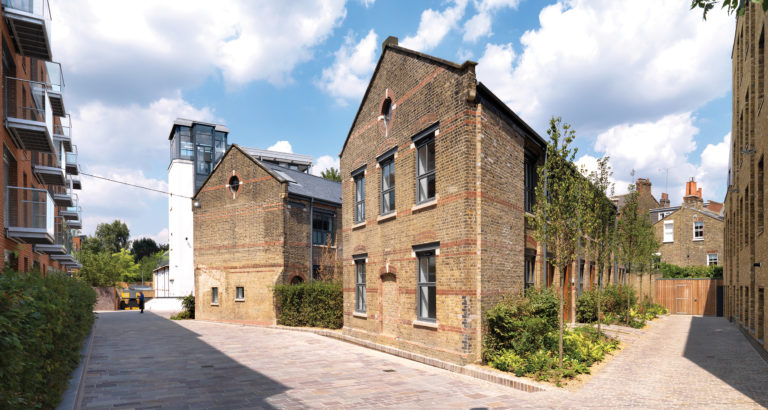
Each apartment maximises space and light through intelligent open-plan design, integrating original industrial features to celebrate the site’s history; exposed roof trusses, high ceilings and large windows, with modern intervention; mezzanines, balconies and rooftop extensions, to provide comfortable and contemporary living.
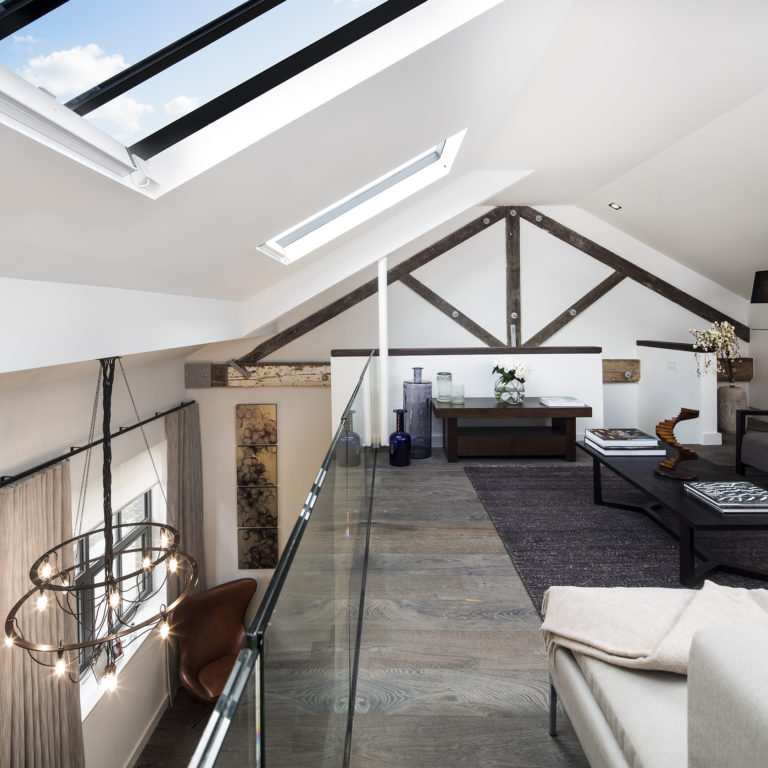
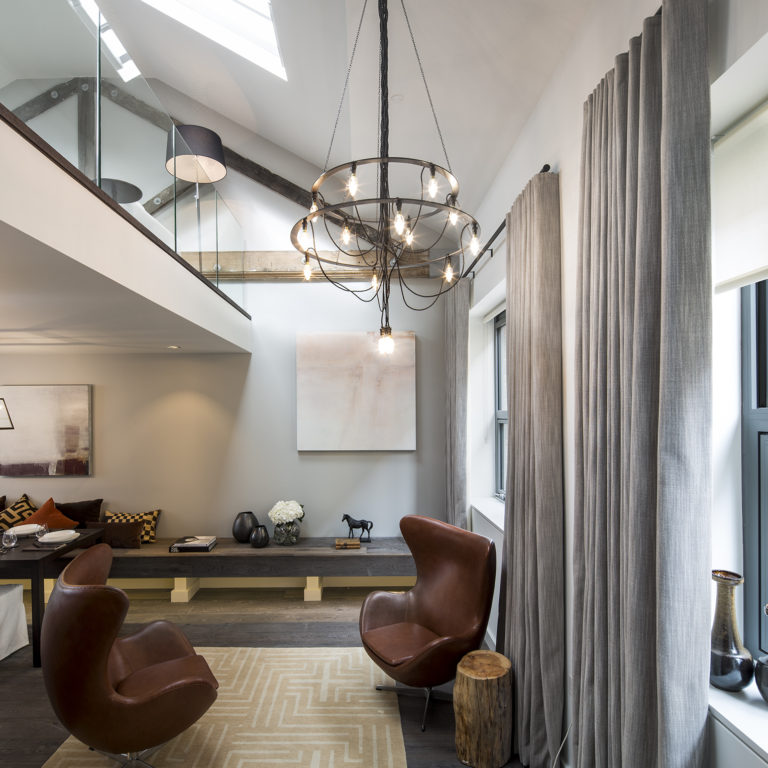
The former warehouse was converted into 19 apartments and duplexes, including two penthouses which take full advantage of the panoramic views of London via a rooftop extension and external terrace.
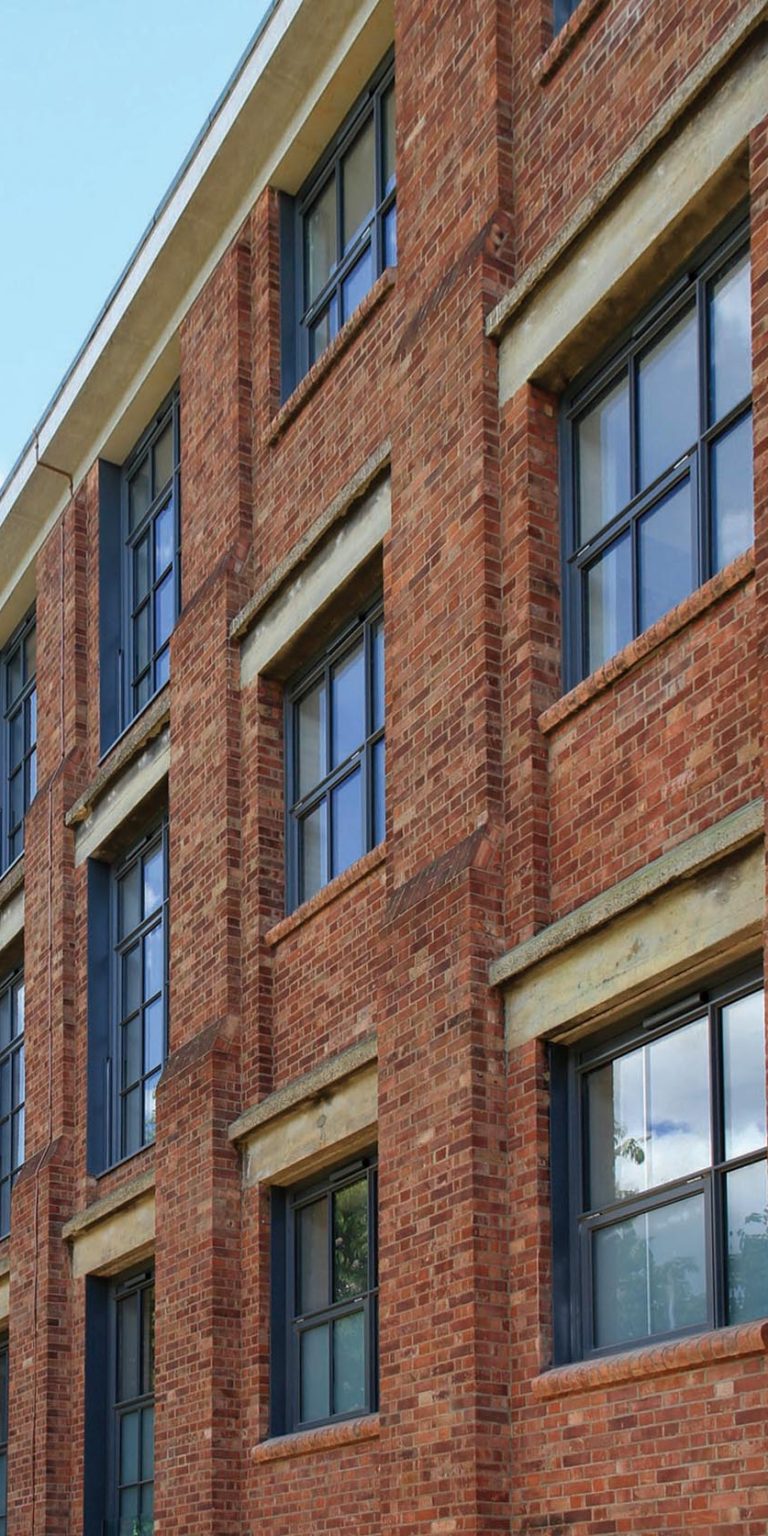
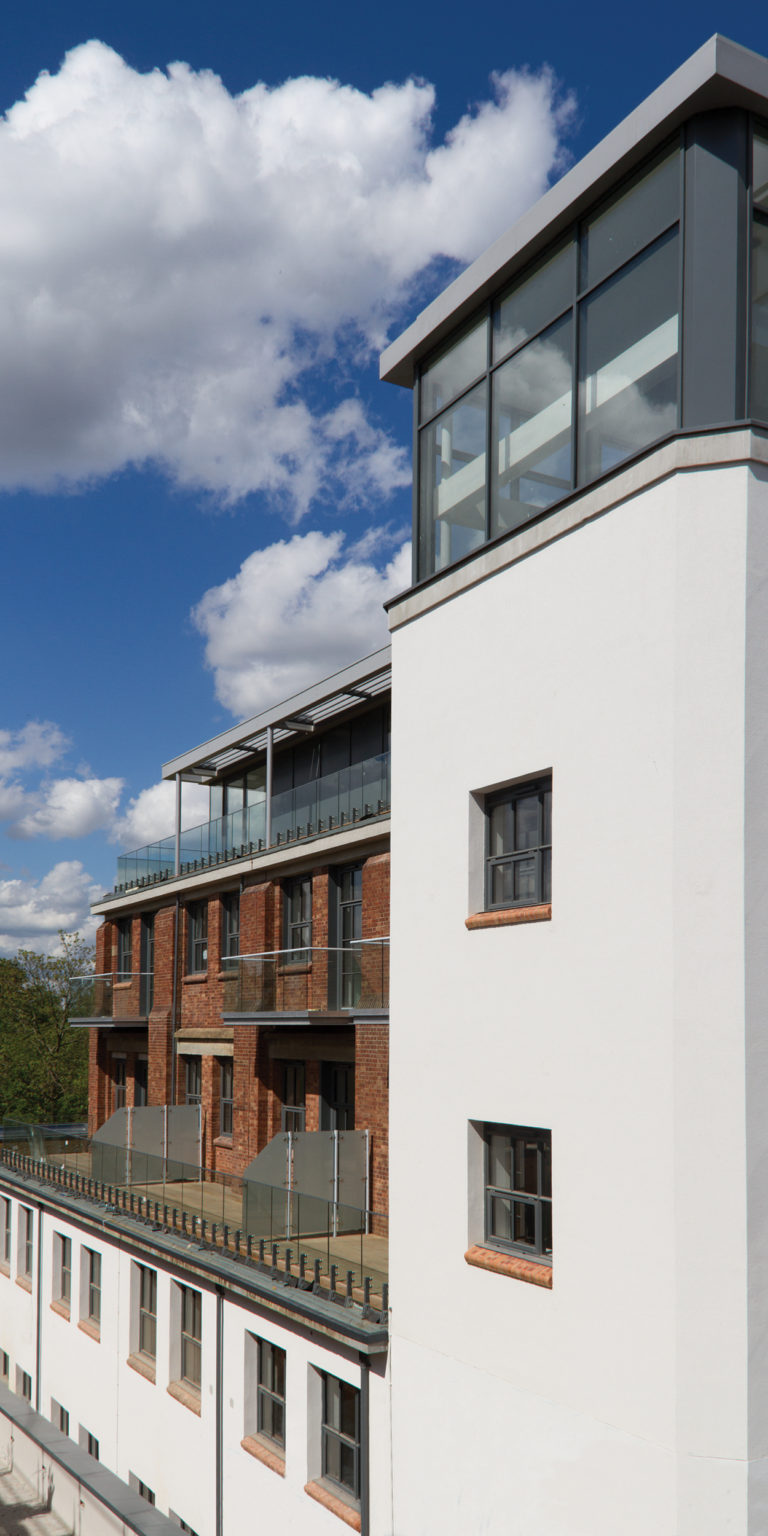
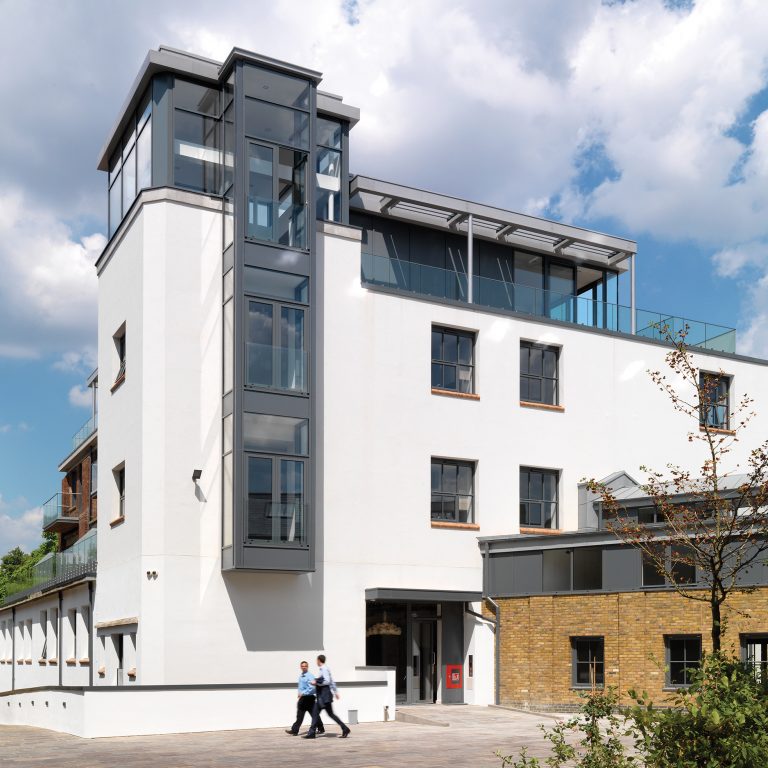
Completing the site
The remainder of the site was demolished and rebuilt. The five new buildings have a contemporary architectural style, yet each was meticulously designed with attention to height, massing, materials and spatial relationships, drawing inspiration from and respecting the site’s historical context.
A mews of four townhouses is located at the pinnacle of the site’s internal street and one further individual house at the other end comprises an ‘upside-down’ layout with bedrooms at ground floor and living spaces above, with terraces off all spaces.
Fronting Macaulay Road, a distinctive apartment building marks the gateway to the site. With a vertically staggered façade designed as a reference to those of its neighbours, it accommodates 59 apartments and the site’s only car parking spaces at lower ground floor. Adjacent, 29 Macaulay Road provides seven homes and has been modelled on the converted former manager’s house beside it.
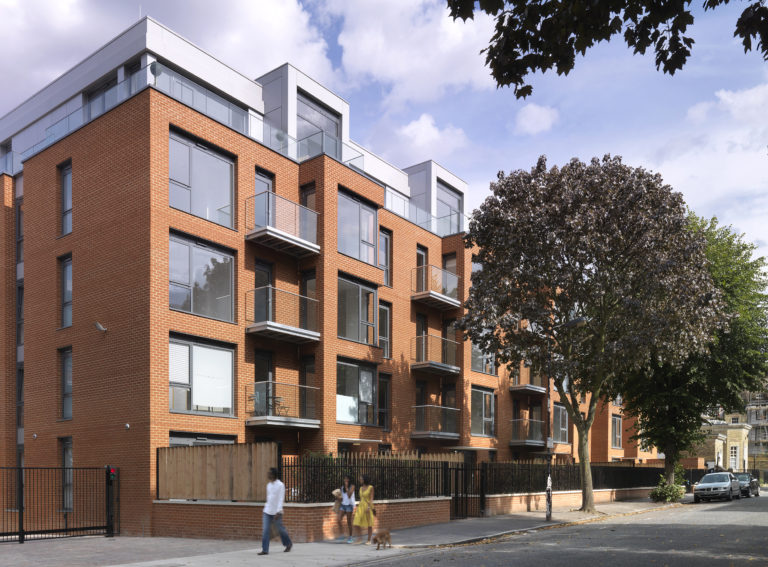
Flexible, creative spaces
The final new building accommodates flexible commercial space, set around a central landscaped courtyard with overhead linking footbridges.
Uniquely, the planning consent for this building included the option for automatic conversion, twelve months after practical completion, of any unsold units to residential use. This building was therefore designed to deliver spaces attractive to the creative industries, yet capable of conversion to residential ‘loft style’ apartments in response to market demand.
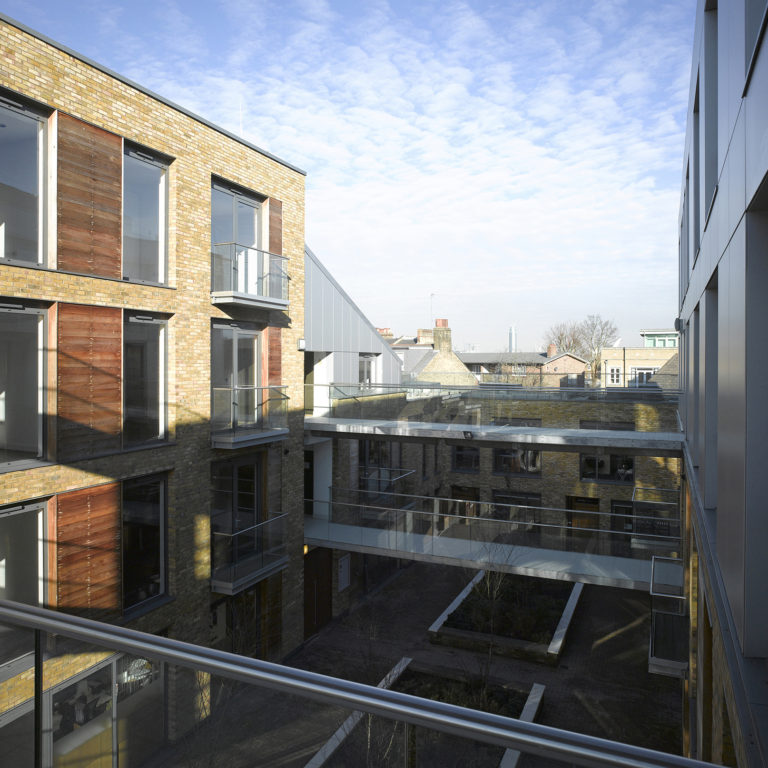
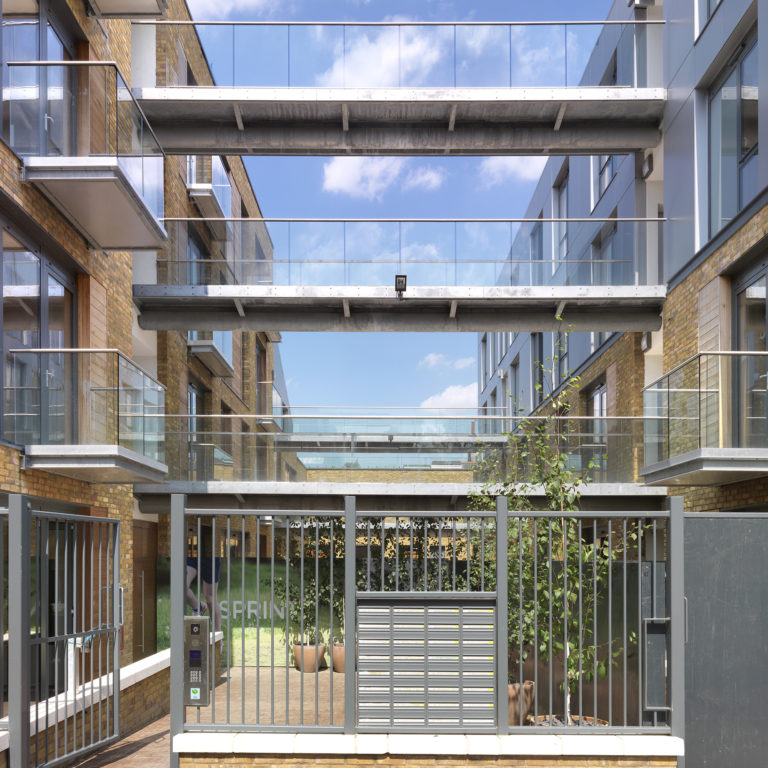
"Assael Architecture has designed a well thought out, award-winning scheme that has met our brief fully. The scheme has weaved contemporary architecture into the conversion of 19th century warehouses creating a new, vibrant neighbourhood in the heart of Clapham Old Town." / Grainger